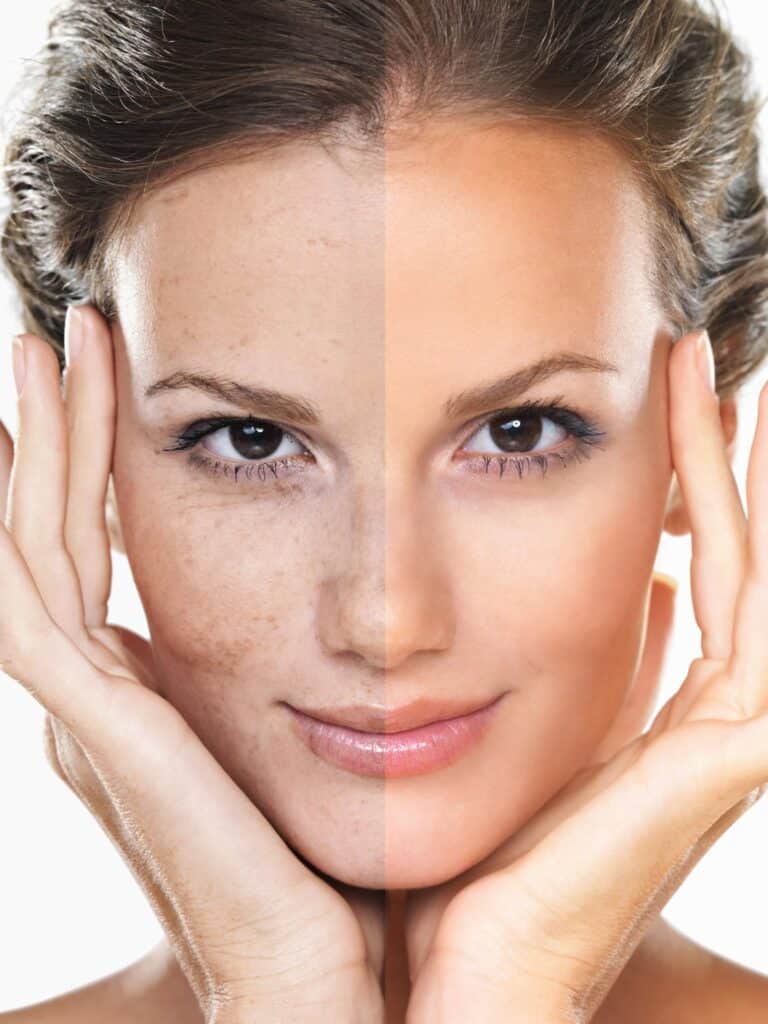Exosome Therapy for Skin Rejuvenation | Unlock Youthful Radiance

I. Introduction
In the realm of skincare and anti-aging treatments, there is a rising star that has captured the attention of scientists, dermatologists, and beauty enthusiasts alike: exosomes. These tiny vesicles, derived from cells, hold immense potential for skin rejuvenation and anti-aging. In this article, we will delve into the fascinating world of exosomes and explore how they can be utilized to transform the aging skin into a youthful and radiant state. Discover the exosome therapy for skin rejuvenation with us.

II. Understanding Exosomes
To comprehend the power of exosomes in skin rejuvenation, we must first understand their nature and purpose. Exosomes are extracellular vesicles secreted by various types of cells, including stem cells. These microscopic entities, measuring only 30-150 nanometers in diameter, encapsulate a range of bioactive molecules such as proteins, lipids, and nucleic acids. Essentially, exosomes act as messengers, facilitating cell-to-cell communication and playing a vital role in tissue regeneration processes.
III. The Science Behind Skin Aging
Before we delve into the potential of exosomes, let us briefly explore the science behind skin aging. The aging process is a complex interplay of intrinsic and extrinsic factors that gradually leads to the loss of skin vitality and youthful appearance. At the cellular level, oxidative stress, DNA damage, and the breakdown of collagen and elastin fibers contribute to the formation of fine lines, wrinkles, and uneven skin texture.

IV. Exosomes and Skin Rejuvenation
Exosomes possess unique characteristics that make them ideal candidates for skin rejuvenation. These tiny vesicles have the ability to transport a multitude of growth factors, cytokines, and other signaling molecules to target cells. By delivering these bioactive cargo, exosomes can stimulate cellular activities, promote collagen synthesis, and activate the skin’s natural repair mechanisms.
Delivery of Growth Factors and Signaling Molecules
Exosomes contain a rich assortment of growth factors, such as epidermal growth factor (EGF), fibroblast growth factor (FGF), and transforming growth factor-beta (TGF-β). When applied to the skin, exosomes can release these growth factors, triggering a cascade of rejuvenating processes. EGF promotes cell proliferation and wound healing, FGF stimulates collagen production, and TGF-β aids in tissue repair and remodeling.
Induction of Collagen Production
Collagen, the structural protein responsible for skin strength and elasticity, undergoes a gradual decline as we age. Exosomes have been shown to stimulate fibroblasts, the cells responsible for collagen synthesis, leading to increased production and improved skin firmness. This boost in collagen levels can effectively reduce the appearance of wrinkles and fine lines.
Activation of Cellular Repair Mechanisms
One of the remarkable attributes of exosomes is their ability to activate the skin’s intrinsic repair mechanisms. By delivering nucleic acids, including microRNAs, exosomes can modulate gene expression and promote cellular rejuvenation. These microRNAs have been found to regulate various processes, such as inflammation, oxidative stress, and extracellular matrix remodeling, all of which contribute to the aging process.
V. Benefits of Exosome Therapy for Anti-Aging
The integration of exosome therapy into anti-aging regimens offers a multitude of benefits for the skin.
A. Reduction of Fine Lines and Wrinkles
The targeted delivery of growth factors and stimulation of collagen production through exosomes can visibly diminish the appearance of fine lines and wrinkles. With regular exosome treatments, the skin can regain its smoothness and youthful texture, leading to a more vibrant complexion.
B. Improvement in Skin Texture and Tone
Exosome therapy has been shown to enhance skin texture and tone by promoting cellular turnover and reducing pigmentation irregularities. The bioactive molecules within exosomes can help in the removal of dead skin cells, revealing a fresher, more even-toned complexion.
C. Enhanced Skin Hydration and Elasticity
Loss of hydration and elasticity are common concerns associated with aging skin. Exosomes, with their ability to stimulate collagen synthesis and improve overall skin quality, can significantly enhance skin hydration and elasticity. This leads to a plumper, more supple complexion that defies the effects of time.

VI. Exosome Therapy Techniques
Exosome therapy can be administered through various techniques, depending on the desired outcomes and the professional’s expertise.
A. Isolation and Purification of Exosomes
The process of isolating and purifying exosomes involves the collection of cell-derived sources, such as mesenchymal stem cells or fibroblasts, followed by centrifugation and filtration to obtain pure exosome populations. This rigorous purification ensures the concentration and efficacy of exosomes for therapeutic purposes.
B. Administration Methods for Exosome Therapy
Exosomes can be applied to the skin through different methods, tailored to the specific needs of the individual.
Topical Application
Topical creams, serums, or masks infused with exosomes can be directly applied to the skin. These formulations allow for convenient and non-invasive exosome delivery, ensuring the bioactive cargo reaches the targeted skin cells.
Injection-Based Techniques
For more targeted and intensive treatments, exosomes can be injected into the skin using techniques such as microneedling or mesotherapy. These methods enable precise delivery of exosomes to deeper skin layers, maximizing their rejuvenating effects.
VII. Safety and Efficacy of Exosome Therapy
Extensive research and clinical studies have demonstrated the safety and efficacy of exosome therapy in skin rejuvenation and anti-aging.
A. Clinical Studies Supporting the Use of Exosomes in Skin Rejuvenation
Multiple clinical trials have reported promising results in terms of wrinkle reduction, skin texture improvement, and overall skin rejuvenation following exosome therapy. These studies have highlighted the potential of exosomes as a safe and effective tool in the fight against skin aging.
B. Potential Side Effects and Precautions to Consider
While exosome therapy is generally well-tolerated, it is essential to consider individual sensitivities and potential side effects. Mild redness, swelling, or temporary skin sensitivity may occur in some cases. It is advisable to consult with a qualified professional before undergoing exosome therapy to ensure suitability and minimize any potential risks.
C. Regulatory Considerations and Quality Control
As exosome therapy gains popularity, it is crucial to establish proper regulatory frameworks and stringent quality control measures. These measures help ensure the safety, purity, and consistency of exosome-based products, reinforcing their efficacy in skin rejuvenation treatments.
VIII. Combining Exosome Therapy with Other Anti-Aging Treatments
Exosome therapy can be combined with other established anti-aging treatments to enhance results and achieve synergistic effects.
A. Synergistic Effects of Exosomes with Microneedling
Microneedling, a popular technique that stimulates collagen production through controlled skin punctures, can be combined with exosome therapy. The microchannels created by microneedling facilitate better exosome absorption, maximizing their rejuvenating potential.
B. Complementary Use of Exosomes and Dermal Fillers
Exosome therapy can complement the use of dermal fillers by promoting collagen synthesis and improving skin quality. By combining these treatments, individuals can enjoy both the volumizing effects of fillers and the long-term rejuvenation benefits of exosomes.

IX. Future Directions and Advancements in Exosome Research
As research in the field of exosomes continues to progress, exciting advancements and future directions are on the horizon.
A. Investigating Novel Sources of Exosomes
Scientists are exploring alternative sources for exosomes, such as plants and bioengineered exosomes, to expand availability and diversify their applications. These innovations may lead to a more sustainable and customizable approach to exosome therapy.
B. Developing Targeted Exosome Therapies for Specific Skin Concerns
Ongoing research aims to develop exosome therapies that target specific skin concerns, such as hyperpigmentation, acne scars, and photoaging. By tailoring exosome formulations to address individual needs, the potential for achieving optimal results in skin rejuvenation becomes even greater.
C. Advancements in Exosome Production and Delivery Techniques
Continued advancements in exosome production methods and delivery techniques are expected to improve the scalability, efficacy, and convenience of exosome-based treatments. Innovations in nanotechnology and biotechnology may enable more precise exosome targeting and controlled release mechanisms.
X. Conclusion
The utilization of exosomes in skin rejuvenation and anti-aging treatments represents a groundbreaking advancement in the field of skincare. These tiny vesicles, with their ability to deliver bioactive molecules, stimulate collagen production, and activate cellular repair mechanisms, hold immense potential for transforming aging skin into a youthful and vibrant state. As research progresses and new discoveries emerge, exosome therapy is poised to revolutionize the way we approach skin rejuvenation, allowing individuals to confidently defy the effects of time and embrace their natural beauty.